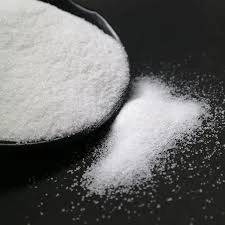Chemicals Used to Treat Drinking Water
Water is an essential resource for human survival, and ensuring that it is safe for consumption is of utmost importance. To achieve this, water treatment facilities employ a variety of chemicals to remove contaminants and pathogens, making water safe to drink. This article explores the common chemicals used in water treatment processes and their functions.
1. Chlorine
Chlorine is one of the most widely used disinfectants in water treatment. Its primary role is to eliminate harmful bacteria, viruses, and other microorganisms. Chlorine is effective against a broad range of pathogens and provides a residual effect, helping to keep water safe as it travels through pipes to consumers. However, the use of chlorine must be carefully managed, as it can react with organic materials to form potentially harmful by-products known as trihalomethanes (THMs).
2. Chloramine
Chloramine, a compound formed by combining chlorine with ammonia, is often used as an alternative to chlorine for disinfection. It is particularly effective for maintaining water quality over extended distances in water distribution systems. While chloramine is less reactive than chlorine and produces fewer disinfection by-products, it is less effective against certain viruses and requires a longer contact time.
3. Ozone
Ozone is a powerful oxidizing agent used for both disinfection and the removal of organic contaminants. It is produced on-site by passing oxygen through an electrical discharge. Ozone treatment is effective at breaking down pollutants and killing microorganisms without leaving harmful residues. However, its instability requires careful management and monitoring, as ozone must be generated just prior to application.
4. Aluminum Sulfate (Alum)
what chemicals are used to treat drinking water

Alum is a chemical coagulant that plays a crucial role in the sedimentation process during water treatment. Its primary function is to destabilize suspended particles, causing them to clump together (coagulate) and form larger aggregates that can be easily removed from water. The use of alum helps clarify the water by removing sediments, dirt, and microorganisms before disinfection occurs.
Lime is used in water treatment for several reasons, including pH adjustment and hardness removal. By raising the pH of water, lime helps to precipitate heavy metals and other contaminants, making them easier to filter out. Additionally, lime can aid in softening hard water by removing calcium and magnesium ions, which can cause scaling in plumbing systems.
6. Sodium Hydroxide
Sodium hydroxide is often used to adjust the pH levels of drinking water. Maintaining a balanced pH is essential for effective disinfection and to prevent corrosion of pipes. If water is too acidic, it can leach metals from pipes, potentially contaminating the drinking water supply. Sodium hydroxide helps ensure that the water is within a safe and stable pH range.
7. Activated Carbon
Activated carbon is utilized primarily for its adsorbent properties, which allow it to trap organic compounds and chlorine by-products. It is especially effective in removing tastes and odors from water, enhancing the overall quality of the drinking water. Although not a chemical per se, activated carbon plays a key role in maintaining the aesthetic qualities of drinking water.
Conclusion
The treatment of drinking water is a complex process that relies on the careful use of various chemicals. Each chemical serves a specific purpose, from disinfection to coagulation and pH adjustment, to ensure that water is safe for consumption. Understanding these chemicals and their functions not only demonstrates the intricacies involved in water treatment but also emphasizes the importance of monitoring and managing water quality for public health. As challenges related to water quality persist, ongoing research and innovation in water treatment technologies will be critical to providing safe drinking water for future generations.

